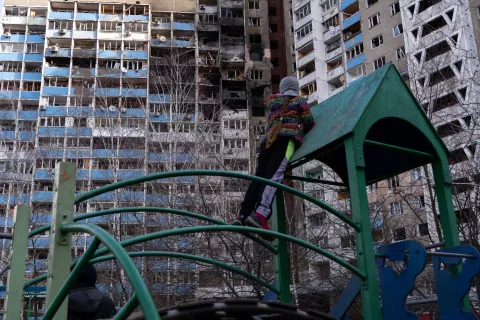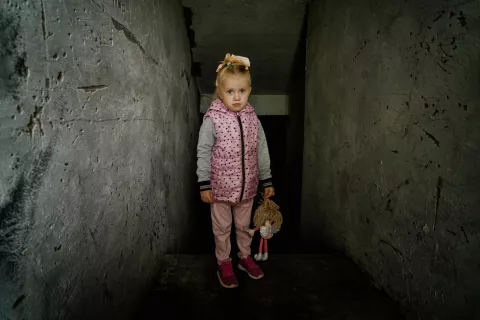In Kyrgyzstan, promoting community care for children with disabilities
About a third of children in institutions are children with disabilities — a rule that can become the exception
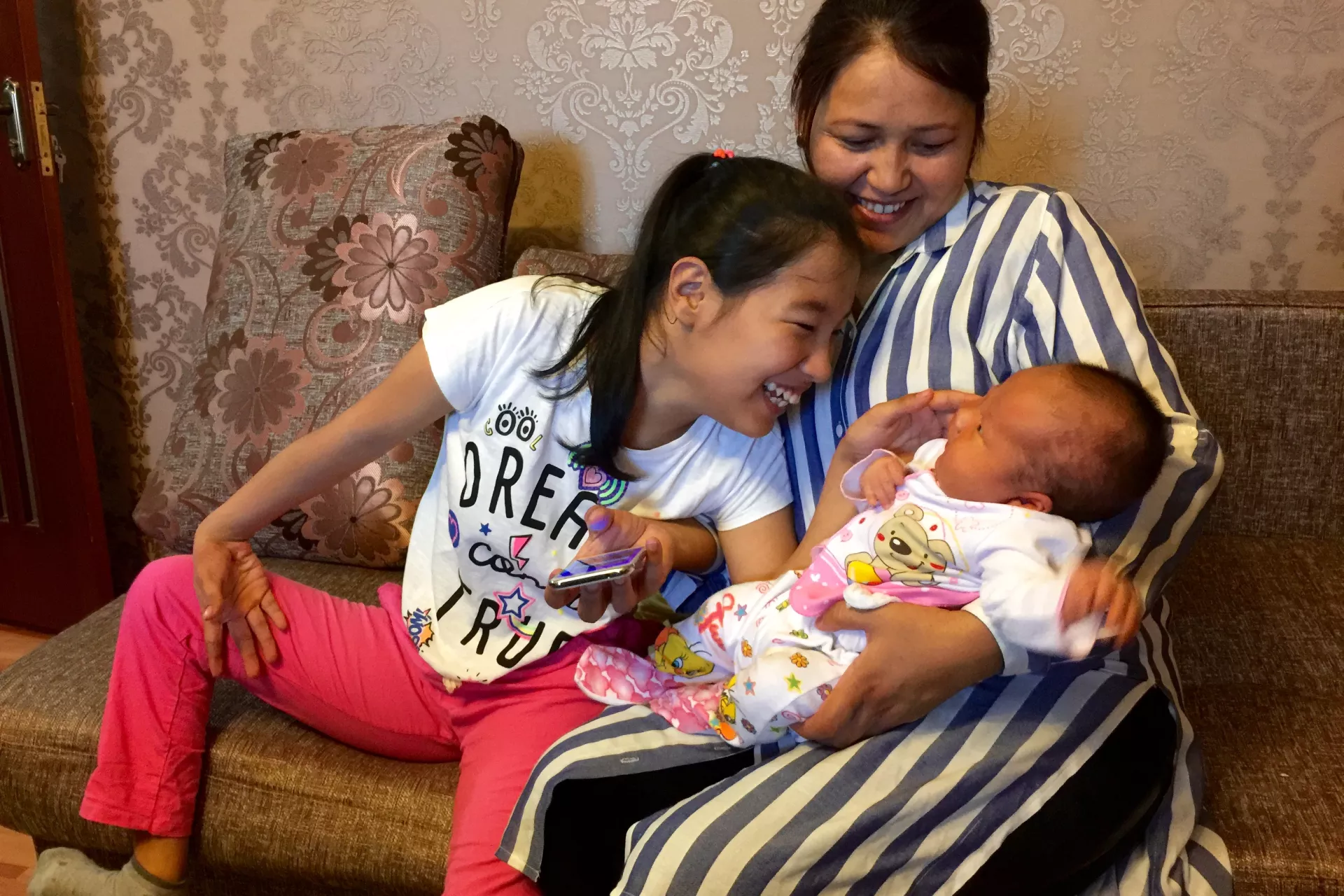
- Available in:
- English
- 中文
UNICEF is working with the Government to turn this standard practice into an exception, by promoting family care and integrated community services.
OSH, Kyrgyzstan, 3 December 2016 – Guliza’s welcoming smile floods the room like the sun piercing through a long night. She hugs us, snaps a selfie, and breaks into a brash but pitch-perfect rendition of a hit by the popular American singer, Ariana Grande.
She grabs her late model smartphone. Her fingers fly as she edits a video, a skill she learned at a recent UNICEF workshop to teach young people technical skills and give them a voice in issues that affect them.
She posts her video on social media – her friends rush to ‘Like’ it.
“My daughter is so talented,” her father says, smiling. “I’m so proud of her.”
Guliza Muzafar Kyzy is just like any other 17-year-old – except for one thing: she has had cerebral palsy since birth.
“When I see other children dance and play, I can’t,” Guliza says matter-of-factly, refusing to feel sorry for herself.
Guliza lives her life to the fullest. She graduated with honours from a US-funded English-language programme. Her parents have made sure she is autonomous, at least indoors: they have positioned metal bars along their apartment walls so she can move around. To go out, her father carries her down four flights of stairs and back with enthusiasm, even though his daughter weighs more each year.
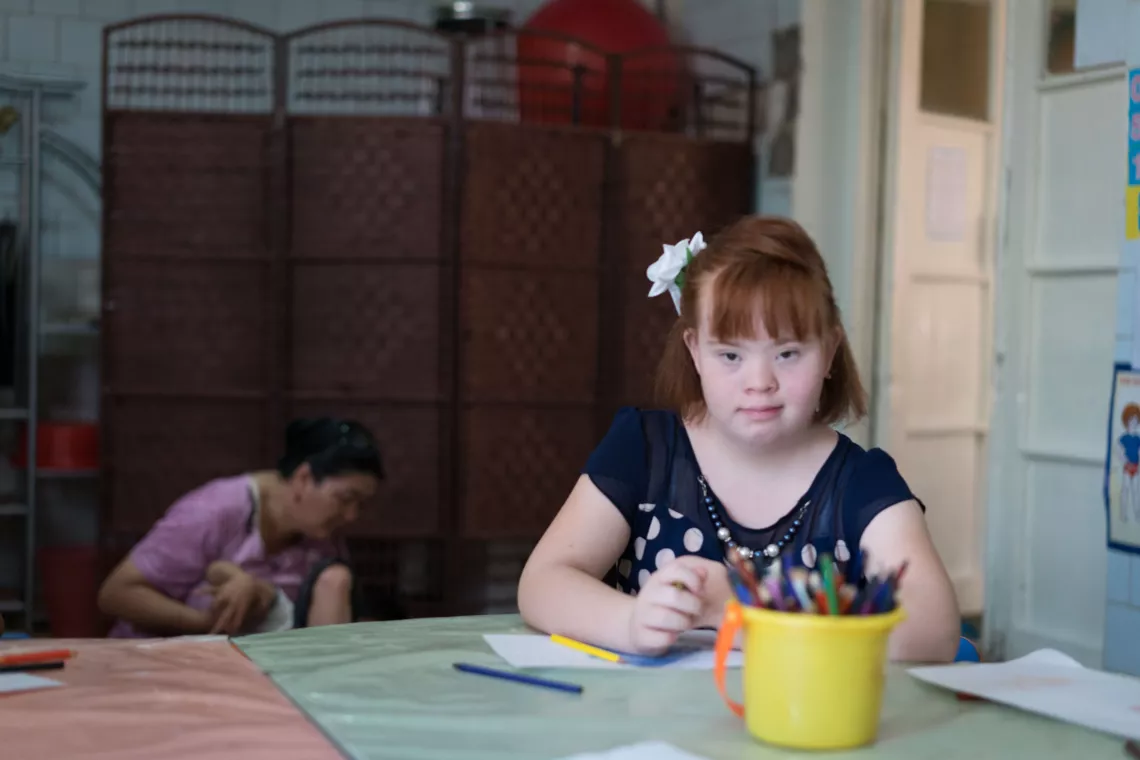
Institutionalization: all too common
Guliza is fortunate. She lives at home, whereas in Kyrgyzstan about a third of children living in institutions are children with disabilities. These children may be orphaned; or if they do have families, they may be too poor to care for them or unwilling to do so because of the strong stigma still attached to disability. Often, other types of community care might not be available. Even hospitals and kindergartens have been known to encourage parents to abandon children with disabilities and place them in institutions.
“We visited a boarding school in [the capital] Bishkek because we thought it would be good for Guliza to be with other children more like her,” says Guliza’s mother. “But when we saw the conditions in which the children were kept, with most of them abandoned by their parents, we couldn’t leave our daughter there.”
While placing children in institutions has been the norm since Soviet times, authorities are now questioning the approach and seeking alternatives.
“Rather than make residential care the rule, UNICEF would like it to be the exception, with family care at the top of the list, followed by fostering in alternative care,” said Munir Mammadzade, UNICEF Chief of Child Protection in Kyrgyzstan. “By developing a model of integrated community services for children with disabilities, everyone would work together to identify disability early in life and remove the barriers they face when trying to access services.”
To ensure children with disabilities are diagnosed early and receive the care and services to which they are entitled, UNICEF is introducing early identification for children 8 and under. This is to assess whether health services can detect disability or difficulties in development in time, and to support families in making sure a child’s condition does not worsen.
UNICEF is already working to improve the availability of essential services for children with disabilities, building the skills of those who work with these children and their parents, and preventing the stigma that encourages the placement of these children in residential institutions. UNICEF also works with the government to develop new and effective ways of parenting, to streamline and reduce administrative complications, and to develop community-based services that emphasize children with disabilities.
The best scenario, says Mammadzade, is one in which social services treat children with disabilities – with the exception of particularly complicated situations – like all other children instead of keeping them apart.
Sadly, though, social workers and facilities that focus on integration are scarce. Where they do exist, they fill up rapidly, a testament to their success.
“Much more can be done,” says Mammadzade, “but there is no comprehensive programme in the country, only scattered pieces.”
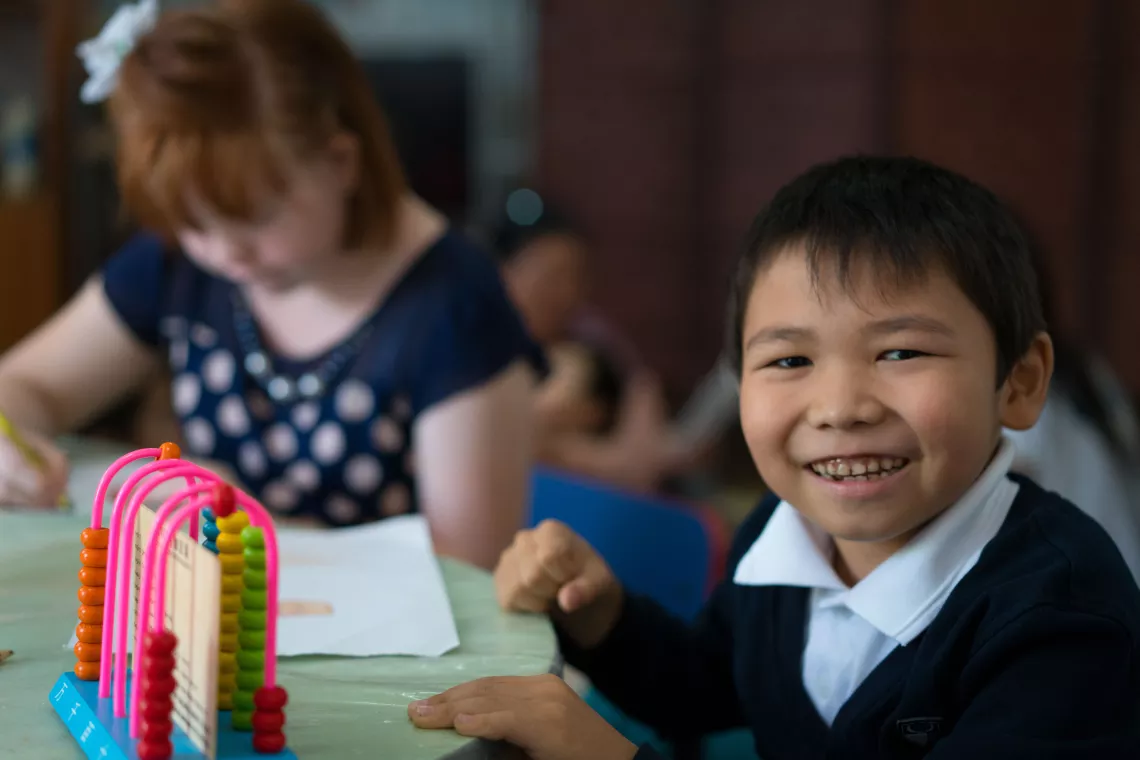
When the community cares
On the outskirts of Osh, Kyrgyzstan’s second city, a cheerful sign greets visitors at the Buchur Day-care Centre for Children with Disabilities. Each week, some 20 children aged 2-16 spend a few hours here learning skills that range from listening to maths to playing together. The rest of the time they are either at home, or in school.
To their parents, Buchur is a blessing.
“Both my children have Down syndrome,” one mother shares in a quiet voice, hugging each in turn. “My boy, who is 8, goes to a special school and can read four-letter words. My daughter is only four-and-a-half but she can read letters and numbers.”
“We have some support, my husband is in the military,” she says. “He adores his children. I know that in some families it might not be the same.”
Established by UNICEF, the day-care centre is now administered by the city authorities and funded by the local budget, ensuring its survival.
Centres like Buchur may not be plentiful, but they have had marked success in helping children with disabilities attend regular schools and integrate better into society. Buchur and similar establishments prepare children for kindergartens, which do not normally accept children with any disabilities. Those children already in regular schools go to Buchur for extra help with homework and access to rehabilitation services.
Had Guliza’s parents known about Buchur or centres like it, she probably would have been enroled, learning to develop her unique talents and skills in a nurturing social environment.
As we say goodbye to Guliza, a gleeful sound follows us down the stairs of her Soviet-era brick building and into the bright midday sunlight.
“Please go shoot some footage for me,” we hear her tell her mother. “Then I can edit it and we can earn some money.”
She bursts out laughing.
Indeed, every inch a teenager.

